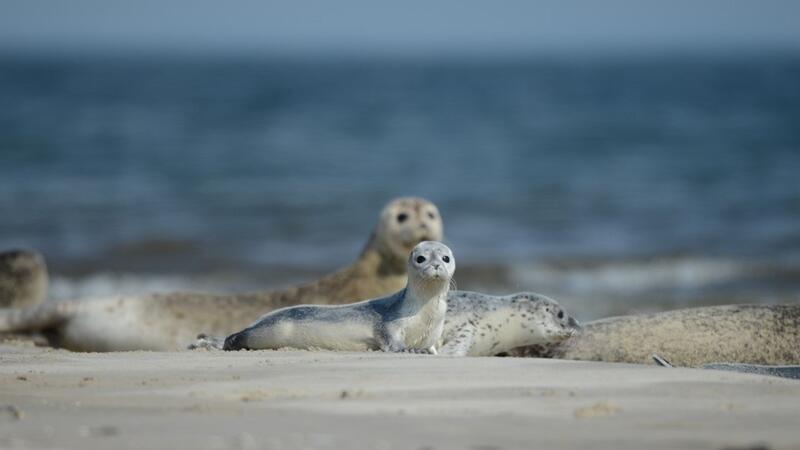Harbour seal population size in the Wadden Sea plateaus close to the level it was in 1900

Thirty years after the implementation of the Wadden Sea Seal Agreement, the population of harbour seals in the Wadden Sea, has increased five-fold and is assumed to have reached the same level as estimated in 1900. During the recent trilateral moult counts, in August 2021, a total of 26.838 seals were counted. Correcting for those that are in the water during the counts, leads to an estimate of 40.000 harbour seals in the Wadden Sea.
Our long-term data suggest that the population, counted during moult, has reached a plateau, as the annual growth rate has slowed to an average of 1% per year since 2012. The 2021 moult count, however, showed a decrease in numbers by 1514 seals (-5%) compared to 2020. Efforts to standardise and coordinate the surveys cannot prevent fluctuations in the number of seals on land as a result of, for example, weather conditions. Therefore, one should refrain from drawing conclusions based on the comparison of only two consecutive counts and rather look at trends over longer periods. The last counts showed regional differences in changes compared to the year before. While numbers in the Netherlands and Lower Saxony/Hamburg were respectively 8% and 10% higher than in 2020; the northern Wadden Sea regions have seen a decrease in counted seals by 18% in Schleswig Holstein and 40% in Denmark. Since 2012, the numbers counted in Denmark have decreased almost continually, while in the other regions numbers seem to fluctuate.
Anders Galatius, lead-author of the report produced by the trilateral Expert Group Marine Mammals, states:” We can be certain that the years of continuous growth in our counts are coming to a halt; in Denmark there is even a sustained decline in numbers. To better advise management it would be important to investigate the mechanisms driving these changes”
Interestingly, the changes in the number of moulting seals in the Wadden Sea are not mirrored in the numbers of pups born in the different regions. Of the 10,903 harbour seal pups born in 2021; 656 pups were counted in Denmark (an increase of 53% compared to 2020) and 5,096 pups in Schleswig Holstein (up by 13% compared to 2020). On Helgoland one pup was observed, this is the first time a birth was registered during a coordinated monitoring date since Helgoland was included in the trilateral monitoring in 2018. Lower Saxony/Hamburg saw a small increase of 6%, while pup counts in The Netherlands decreased by 1%. Overall, there were 10% more pups counted in 2021 than in 2020, and pup counts have grown by 8% annually over the last 5 years. The discrepancy between the high number of pups born each year and the apparent lack of recruitment of these pups into the adult population has raised questions among experts and offers a new avenue for research to better understand the changes occurring. The Wadden Sea Seal Agreement is a key instrument for working together, across international borders, in order to better track and understand these kinds of changes.
You can read the entire seal report here.
